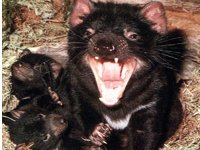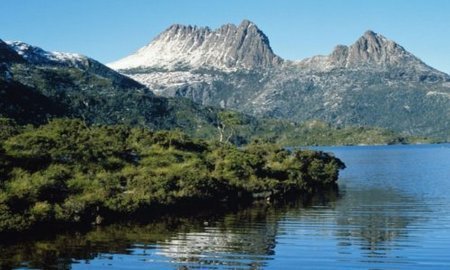 the Travel Enthusiast
the Travel Enthusiast
- 25 Jun
Tudi in Amazing Places | NO COMMENTSAmazing Earth: Tasmania
 Just try to imagine traveling the same distance like between Los Angeles and Denver in one direction and reaching the shores of Antarctica, while if turn the other way and go for 300 miles, you will find one of the most arid deserts in the world. Here, between the hot Australian desert and the frozen wilderness of the South Pole lies one of the most interesting islands in the world: Tasmania.
Just try to imagine traveling the same distance like between Los Angeles and Denver in one direction and reaching the shores of Antarctica, while if turn the other way and go for 300 miles, you will find one of the most arid deserts in the world. Here, between the hot Australian desert and the frozen wilderness of the South Pole lies one of the most interesting islands in the world: Tasmania.Many of you might have heard about this small Australian state named Tasmania from the famous cartoon depicting a Tasmanian devil named Taz. Although this endemic animal is for Tasmania just what the kangaroo is for Australia or the kiwi for New Zealand, its proverbial ferocity is just one small aspect of the island’s amazingly rich wildlife. During today’s post, we will try to focus one some of the aspects that make Tasmania such a an amazing place.
Probably the only thing in Tasmania that is moodier than the Tasmanian Devil is the weather. Although temperatures are generally the same as in Europe, the low degree of industrialization and the constant winds coming from the ocean cause the weather to be very unpredictable. However, it is equally true that Tasmania has the cleanest air in the whole world and some remarkably pure and tasty mineral waters.
Vivacious springs, century old eucalyptus trees, dense forest and crystal clear lakes are only a few of the natural beauties that one can encounter in Tasmania. Actually, many of Tasmania’s trees are quite amazing: the island is known to be home to both the oldest (Houn Pine Tree) and the tallest tree on Earth (Eucalyptus Regnans).
In order to give you an idea of the unbelievable diversity and uniqueness of the Tasmanian flora, let me just mention that 60% of the plant species can be found only on this island (some of them being the ancestors of the same species that populated the Earth millions and millions of years ago, when the all the continents were united).
 Unfortunately, the local fauna was irreversibly affected by the arrivals of colonists. The introduction of some European carnivores in a habitat specific to marsupials (which is also the case of Australia) has affected much of Tasmania’s typical animal species. Due to some incurable and highly courageous disease, many of the Tasmanian devils have perished in the latest years, and now the authorities are making serious efforts to resuscitate the devil population.
Unfortunately, the local fauna was irreversibly affected by the arrivals of colonists. The introduction of some European carnivores in a habitat specific to marsupials (which is also the case of Australia) has affected much of Tasmania’s typical animal species. Due to some incurable and highly courageous disease, many of the Tasmanian devils have perished in the latest years, and now the authorities are making serious efforts to resuscitate the devil population.But, there still are numerous special of small animals, birds and frogs that one can encounter through the country’s rich and evergreen woods.
- Flights
- Hotels
- Packages
- Cars
- Cruises
travel search by Travelgrove (get this widget)
The popular cliche ‘living-fossil’ can be applied to both some plants and animals living in Tasmania. One of the best known such ‘prehistoric’ animals is the Ornithorhynchus, also referred to as the ‘duckbilled platypus’ (below you can see a picture of this weird animal, looking like a strange combination between a duck and a water rat). Another great thing about Tasmania is that it allows visitors to experience various vegetation zones: the west and south are scarcely inhabited, thus allowing tourists to explore some unspoiled habitats. The east and north coast are best known for their beaches, quaint towns and water sports facilities, while the capital Hobart is quite eventful.
Another great thing about Tasmania is that it allows visitors to experience various vegetation zones: the west and south are scarcely inhabited, thus allowing tourists to explore some unspoiled habitats. The east and north coast are best known for their beaches, quaint towns and water sports facilities, while the capital Hobart is quite eventful.You might also like

